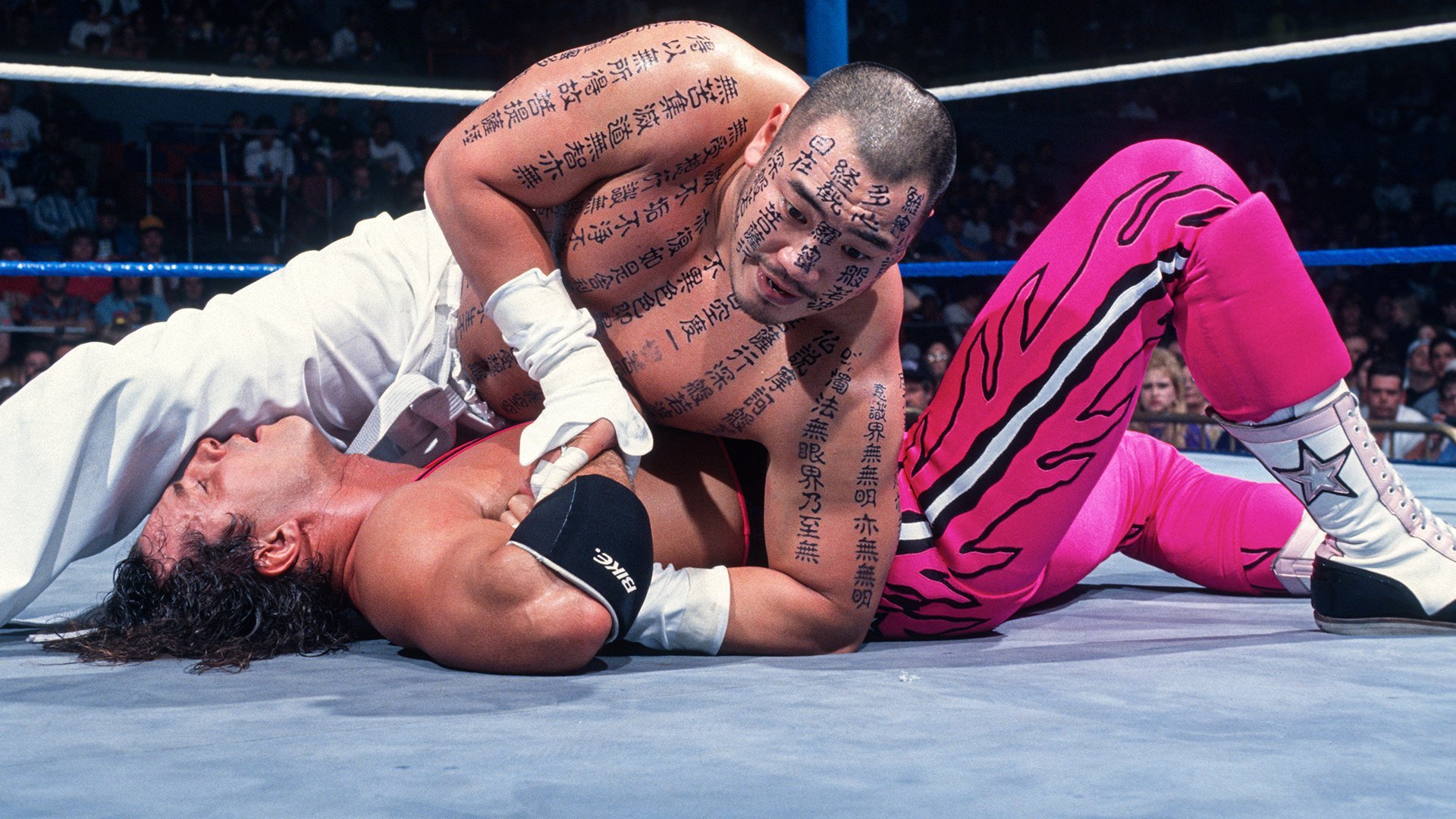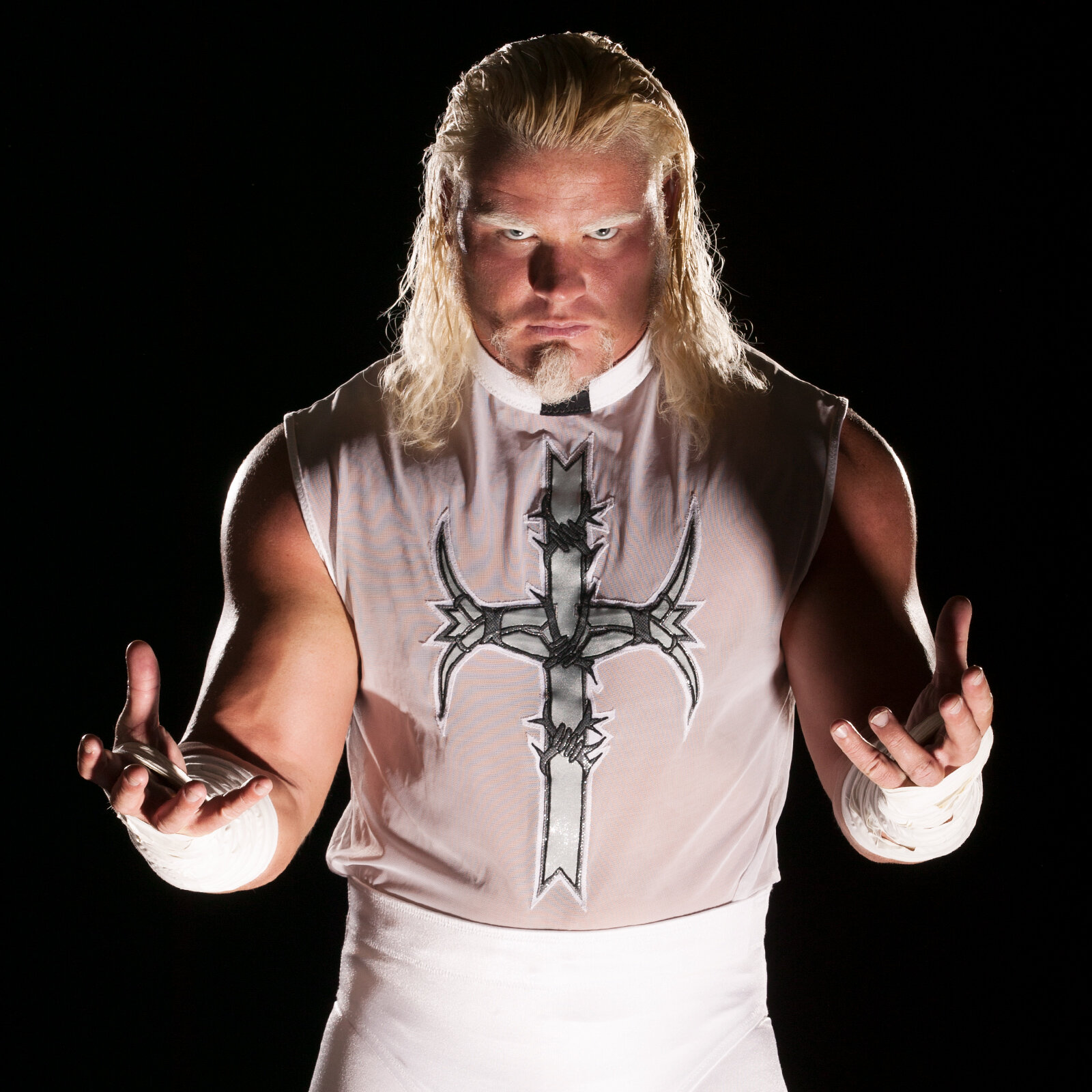The Ballad of Waylon Mercy
“Every man… every man has to go through Hell to reach paradise” – Max Cady, Cape Fear (1991)
1995 is widely regarded by many as one of the worst years in modern professional wrestling history. The business was down across the entire business, still reeling from the after-effects of the previous year’s steroid trial. Hulk Hogan and Randy Savage had departed for WCW but were engaged in one of the most cartoonish storylines of all time with the dreaded Dungeon Of Doom. The WWF was in the midst of rebuilding around their “New Generation” slogan, relying on Diesel as the WWF Champion, but were giving him horrendous creative battling against Sid and that year’s much-maligned King Of The Ring winner, Mabel. It was the year of job-based gimmicks, from the hockey-playing Goon to the garbage man Duke ‘The Dumpster’ Droese. But in the summer of 1995, a character would emerge from the seeming wreckage of the time. Portrayed by Dan Spivey, Waylon Mercy was a character so far ahead of its time, with such intricate character work during a time that everything was kid-friendly, he would be short-lived due to an unfortunate injury, but at the same time would also lay the groundwork for a character that would follow in his footsteps nearly 20 years later. This is the Ballad of Waylon Mercy.
Dan Spivey was nearing the end of his long career in 1995, having wrestled all around the world, most notably as a member of the Skyscrapers in WCW, alongside future WWF Champion and WrestleMania main eventers Sid Vicious and Mean Mark Calloway (the future Undertaker). Spivey wanted to do something different. Spivey would speak later on the character.
“I had met with Gerry Brisco and Vince were down in Florida, Tampa. And they wanted to talk to me about bringing me in. And we um, came up with a character, the Waylon Mercy character. I had never been a character I’d always been myself and I was looking forward to it and um, I enjoyed doing that character, I regret the fact that I didn’t have, I wasn’t in good health to finish the run with that. Ya know, it’s one of the biggest things that bothered me that I didn’t really make it with the time of doing it.”
He would also confirm the longstanding rumor that the character was based on Robert DeNiro’s Max Cady, in the 1991 film Cape Fear. The film was a remake of the 1962 film of the same name which starred the incredible duo of Gregory Peck and Robert Mitchum, arguably one of the most underrated actors of his generation. Both those men would return in different roles in the remake, which took the story of a released convict stalking and terrorizing the family of the lawyer he blames for his incarceration. The remake would star Nick Nolte in the lawyer role, with Robert DeNiro putting in an exceptional performance as Max Cady, the convict who was covered in tattoos but could also be a complete gentleman before snapping at a moments notice. For a certain generation, the film may most fondly be remembered for the spoof done by The Simpsons, showcasing Sideshow Bob stalking Bart and his family in the fifth season episode “Cape Feare” which is also one of the show’s finest episodes.
But back to Spivey as Waylon Mercy. Vignettes would start playing on WWF television, showcasing Mercy wearing long white pants with a Hawaiian shirt. Spivey now sported long black hair, with a fake knife tattoo on his forehead. He would speak in an uneasy soft Southern accent, always ending his promos with the phrase “Ya know what I mean?” For the time period that they were airing, there was truly nothing like it in the world of wrestling. Upon his debut, his music would start with him speaking, saying “Lives are gonna be in Waylon Mercy’s hands, ya know what I mean?” He would make his way to the ring, politely speaking with the fans along the way, before greeting and shaking hands with both the referee and his opponent. Removing his Hawaiian shirt, as soon as the bell rings he would turn into a vicious monster with absolutely no regard for his opponent and what he may do to them. After finishing the match with his sleeper hold finisher with a crazed look on his face, he would return to his gentlemanly ways, again shaking hands with the referee before departing the arena.
Making his TV debut in June 1995, Waylon Mercy would make his way through the lower ranks of enhancement talent, including his Monday Night RAW debut against a young Jeff Hardy. The ensuing weeks would see him battling and defeating the likes of Aldo Montoya and Bob Holly, and future Hall of Famers Sean Waltman (working as the 1-2-3 Kid) and Rikishi (working as Fatu). He would suffer his first official loss to Bret ‘The Hitman’ Hart via disqualification on an August 1995 episode of WWF Superstars, before losing officially to the Hitman on an episode of Action Zone a few weeks later. The following month would see him challenge the WWF Champion Diesel in the legendary Maple Leaf Gardens in Toronto, where he would fall short.
Mercy would make his one and only WWF pay-per-view appearance at In Your House 3 in September of 1995, battling in the opening match against Savio Vega. By this point, it was clear that Spivey, never truly known for his technical stylings, was in rough shape and couldn’t perform at the level that he once could. Interestingly, Vince McMahon on commentary would note how Mercy’s knees buckled at one point in the match. Following a spinning kick to the face, Savio Vega would pick up the win. Waylon Mercy would make one more television appearance on an episode of WWF Superstars, once again failing to claim the WWF Championship from Diesel. He would continue on the house show loop working a series of matches against Bob Holly before finally departing from the WWF and retiring due to injuries.
According to the man himself, shortly after leaving, he would have a full hip replacement and other surgeries, leading to him getting hooked on pain pills as so many of his cohorts had over the years. In the years since Spivey would get clean, even opening his own Rehab program in Florida, which has helped many other wrestlers, including most recently Jeff Jarrett.
Over the years, many have speculated what could have been with the Waylon Mercy character, and in the early 2010’s, Spivey would be approached by Windham Rotunda, a man with who he was familiar due to his former partnership with Windham’s father Mike. The young Rotunda was looking to reinvent himself following a failed run as Husky Harris. He had studied the Waylon Mercy character and felt that he could expand upon it for his new Bray Wyatt character. In an interview on Stories With Brisco and Bradshaw, he spoke about the Wyatt character and how he felt overall on the legacy of the character.
“Even when Bray Wyatt came out, he came to me and asked me if he could do that. I said, “Sure man, go with it’, so we talked about it. He grew up in a redneck area, so he ought to know some rednecks around there. He really did a great job with it. It’s unfinished business for me. It’s something that haunts me to this day that I didn’t suck it up and keep going with it.”
Watching the early incarnation of the Bray Wyatt character, during his cult leader days before he became The Fiend, it’s almost impossible to not see shades of the Waylon Mercy character and how Wyatt took the base of the character and expanded it in such an intriguing way. One has to wonder what could have been had Spivey not been in such a broken-down state. Given the state of the WWF in 1995, and the changes that would come throughout 1996 and 1997 with the entire business, the idea of Waylon Mercy having a run on the top, terrorizing not only his opponents but the entire fanbase, is absolutely something that could be talked about for hours on end. Would he have suffered poor booking a la what would happen to his spiritual successor, or would he have become the most soft-spoken yet insane WWF Champion ever? Of course, this all ends up as speculation, but the effects of such an intriguing character still ripple through the business nearly 30 years later, much like the rock he threw in the lake during one of his debut vignettes.



